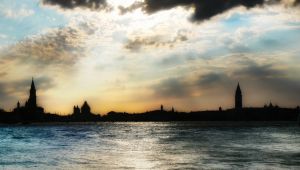A peek into the world of my upcoming novel: The Venice Biennale, Part 2
A peek into the world of my upcoming novel: The Venice Biennale, Part 2
A peek into the world of my upcoming novel: The Venice Biennale, Part 2
-
Hannah
-
Hannah
A fortnight ago I introduced the Venice Biennale, a vast contemporary art exhibition in the Italian city with a long history. Today, I look at the power of the Biennale in encouraging both unity and diversity.
Worldwide involvement
The Biennale is a major player on the world art stage, and it attracts involvement from many countries. In 2011, 73 countries participated: Albania, Andorra, Argentina, Australia, Austria, Azerbaijan, Bangladesh, Belarus, Belgium, Brazil, Bulgaria, Canada, Chile, China(PR), Congo(DR), Costa Rica, Croatia, Cuba, Cyprus, Czech and Slovak Republics, Denmark, Egypt, Estonia, Finland, France, Georgia, Germany, Greece, Haiti, Hungary, Iceland, India, Iran, Iraq, Ireland, Israel, Italy, Japan, Korea, Latvia, Lithuania, Luxembourg, Macedonia, Mexico, Moldova, Montenegro, Netherlands, New Zealand, Norway, Poland, Portugal, Romania, Russia, San Marino, Saudi Arabia, Serbia, Singapore, Slovenia, South Africa, Spain, Sweden, Switzerland, Syrian Arab Republic, Thailand, Turkey, Ukraine, United Arab Emirates, United Kingdom, United States of America, Uruguay, Venezuela, Wales and Zimbabwe.
In 2013, 88 countries are set to exhibit, among them 10 countries that are new to the event: Angola, Bahamas, Kingdom of Bahrain, Republic of Ivory Coast, Republic of Kosovo, Kuwait, Maldives, Paraguay and Tuvalu. The Holy See is also exhibiting.
Such a wealth of countries brings much scope for diversity in the art on display, creating discussion for art scholars. But like other international events, such as the Olympics, the Biennale also serves to bring together countries to find points of unity within the universal language of art.
As the Biennale Ideological Guide 2013 explains:
[The] pavilions may be considered to function as embassies, where each country showcases the artists it believes to be most representative for the current developments in its art sector.
So this is very much an arena in which to share but also show off, in a sense. And why not show off the wonderful artistic talent in a country!
Still, whether or not to exhibit is a hotly contested subject in some nations. For example, Singapore announced it would not exhibit at the next event, and commentators posited that the reason is the cost involved and the fact that the country would prefer to spend that money in-country in a way that involves the private sector.
A reflection of global politics
The romantics among us may imagine that the Biennale is an event that brings together countries to celebrate art outside of politics. But as the 1936 Olypmics showed at the extreme, any world event is inseparable from political situations. The Biennale Ideological Guide 2013 calls the organisation of the pavilions in the park ‘an allegory of the global political order’. Pavilions have been held for many years, with countries like United Kingdom, Spain and The Netherlands in key positions, and relative newcomers to the event, like Iraq, Mexico and Macedonia, are ‘marginalized in the more obscure parts of Venice, their pavilions hidden in the back-ends of the city’.
Diverse artistic works
The Biennale works to be an inclusive event, displaying works from artists all over the world. Age need not be a factor. Neither is an artist’s style necessarily – the Biennale has a tradition for spotting, showcasing and supporting new movements in art, after all.
Take, for example, the list of artists selected to exhibit in the upcoming Biennale’s ‘The Encyclopedic Palace’:
- Argentina: Varda Caivano (1971-)
- Brazil: Arthur Bispo do Rosário (1910-1989)
- France: Neïl Beloufa (1985-); Roger Caillois (1913-)
- Germany: John Bock (1965-); Brehmer (1938-1997)
- Greece: Vlassis Caniaris (1928-2011)
- Israel: Uri Aran (1977-)
- Italy: Gianfranco Baruchello (1924-); Rossella Biscotti (1978-); Yuri Ancarani (1972-); Marino Auriti (1891-1980); Enrico Baj (1924-2003)
- Ivory Coast: Frédéric Bruly Bouabré (1923-)
- Poland: Hans Bellmer (1902-1975); Pawel Althamer (1967-); Miroslaw Balka (1958-)
- Romania: Geta Bratescu (1926-); Stefan Bertalan (1930-)
- Russia: Victor Alimpiev (1973-); Nikolay Bakharev (1946-)
- Sweden: Hilma af Klint (1862-1944)
- Turkey: Yüksel Arslan (1933-)
- UK: Ed Atkins (1982-); Phyllida Barlow (1944-)
- US: James Lee Byars (1932-1997); Ellen Altfest (1970); Levi Fisher Ames (1843-1923); Carl Andre (1935-); Morton Bartlett (1909-1992)
Some alive, some deceased; some young, some older – and from many countries and reflecting various styles.
The upcoming exhibition itself is designed to promote this diversity brought together. Its inspiration is Italian artist Marino Auriti’s Palazzo Enciclopedico, an imaginary museum to house all worldly knowledge. Director Massimiliano Gioni says:
Auriti’s plan was never carried out, of course, but the dream of a universal, all-embracing knowledge crops up throughout the history of art and humanity, as one that eccentrics like Auriti share with many other artists, writers, scientists, and self-proclaimed prophets who have tried — often in vain — to fashion an image of the world that will capture its infinite variety and richness. Today, as we grapple with a constant flood of information, such attempts seem even more necessary and even more desperate.
The line between professional artists and amateurs, outsiders and insiders is blurred, so creating a space for exciting exploration and discovery.
If you’d like to keep up-to-date with the Biennale, visit http://www.labiennale.org.
